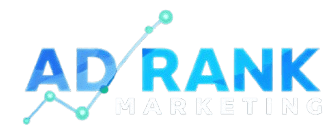Digital Marketing Case Study: Job Portal Website
A job portal website offering job listings, career advice, and recruitment services to job seekers and companies. The platform helps users find full-time, part-time, freelance, and remote job opportunities across various industries. It also provides additional services like resume building, interview coaching, and career development tools.
Objective
- Increase website traffic by attracting job seekers and companies.
- Enhance user engagement on the platform, ensuring users stay active and apply for jobs.
- Boost job application conversions for job seekers and recruitment inquiries for employers.
- Build brand awareness and position the website as a trusted job portal in the market.
Challenges
- High Competition: The job portal industry is competitive, with established players such as LinkedIn, Indeed, and Glassdoor.
- Niche Targeting: Reaching both job seekers (from various industries and experience levels) and companies (looking for talent) required targeting multiple audience segments.
- Low Brand Recognition: As a newer player in the market, gaining brand trust and visibility was crucial.
- Conversion Rate: Job portals often see high traffic but low conversion rates due to users browsing jobs without applying.
Strategy Implementation
1. Website Optimization & UX/UI Design
o Streamlined job search functionality, making it easier for job seekers to filter jobs by industry, location, salary, and experience level.
o Improved company profile pages to allow employers to showcase their company culture and job openings effectively.
o Mobile-friendly design, ensuring users could search for jobs and apply through smartphones.
o Call-to-Actions (CTAs): Added clear CTAs like “Apply Now,” “Post a Job,” and “Create Your Resume” on key pages to increase conversions.
o On-Page SEO: Targeted keywords like “job portal,” “find jobs online,” “freelance job search,” and “remote job opportunities.”
o Local SEO: Focused on geo-targeting to attract regional job seekers and businesses. Optimized for city-specific job searches (e.g., “jobs in [City Name]”).
o Content SEO: Developed content like job search tips, career development advice, and industry insights to attract organic traffic and increase keyword rankings.
2. Content Marketing
o Created blog content around job search strategies, resume writing tips, interview preparation, and career development (e.g., “How to Ace Your Job Interview” and “10 Tips for Writing a Standout Resume”).
o Regularly posted job industry trends, company spotlights, and success stories of users who found jobs through the platform, creating a sense of community and trust.
Created a hashtag for social media users to share job application tips or success stories, creating organic engagement.
3. Social Media Marketing
o LinkedIn: LinkedIn was a key platform for targeting professional job seekers. Regularly shared job listings, career tips, and company spotlight posts.
o Facebook: Used Facebook to share engaging content, including job openings, user success stories, and career advice. Created a community group for job seekers to exchange information and experiences.
o Instagram: Shared visual content such as job tips, motivational quotes, and short video clips on career development and job search advice. Used Instagram Stories for behind-the-scenes content and quick job tips.
o Targeted Facebook Ads: Ran targeted ads for job seekers based on location, interests, and demographics (age, education, industry experience). Ads focused on promoting specific job listings, career resources, and resume building services.
o LinkedIn Ads: LinkedIn Ads targeted professionals looking for career advancements or job changes, promoting the platform’s premium services, such as resume reviews and job search consultations.
o Instagram Stories: Used Instagram Stories to share job openings, resume-building workshops, and application deadlines in a visually appealing format.
o Google Search Ads: Ran Google Ads campaigns for high-intent job search keywords, such as “find a job near me,” “remote job opportunities,” and “apply for jobs online.”
o Targeted specific industries and career levels through tailored ad copy, such as “Entry-Level Jobs in Marketing” or “Senior Developer Job Openings.”
o Google Display Ads: Used Google Display Ads to retarget users who visited the site but did not complete applications. Ads promoted specific job opportunities or encouraged them to create a profile and apply.
o Remarketing: Implemented remarketing strategies to re-engage users who browsed job listings but didn’t apply or create an account, increasing the chances of conversion.
4. Influencer & Affiliate Marketing
o Collaborated with micro-influencers in the tech and sustainability niches to review and promote refurbished products.
o Sponsored posts on social media, including video reviews and comparisons between refurbished devices and new ones.
Launched an affiliate program, offering commissions to bloggers and influencers for driving sales via referral links. This helped build awareness and increase sales through trusted third-party voices
5. Email Marketing
Created weekly newsletters featuring new job listings, career advice, and tips for job seekers. The newsletter also highlighted job openings based on users’ search history and preferences.
Sent personalized job alerts to users who signed up with specific keywords or job interests. These alerts were tailored to their preferred job type, location, and industry.
Results
In the past six months, the website experienced significant growth, with organic traffic increasing by 85% due to effective SEO, content marketing, and social media strategies. This surge in traffic led to a 30% rise in average time spent on the site, as users engaged more with job listings and career resources. Conversion rates for job applications improved by 40%, driven by targeted Google Ads and a user-friendly website design, while new employer sign-ups rose by 50% thanks to successful LinkedIn and Facebook advertising campaigns. Social media presence also flourished, with Facebook followers increasing by 50% and Instagram followers by 60% through regular engagement and paid ads, alongside a 30% boost in LinkedIn engagement. The return on investment for paid advertising was impressive, yielding a 6x return on ad spend, while email marketing campaigns achieved a 4x ROI, particularly through personalized job alerts. Feedback from job seekers highlighted appreciation for the personalized alerts and the website’s navigability, while employers valued the platform’s ease of use for posting jobs and the quality of candidates applying through the site.

